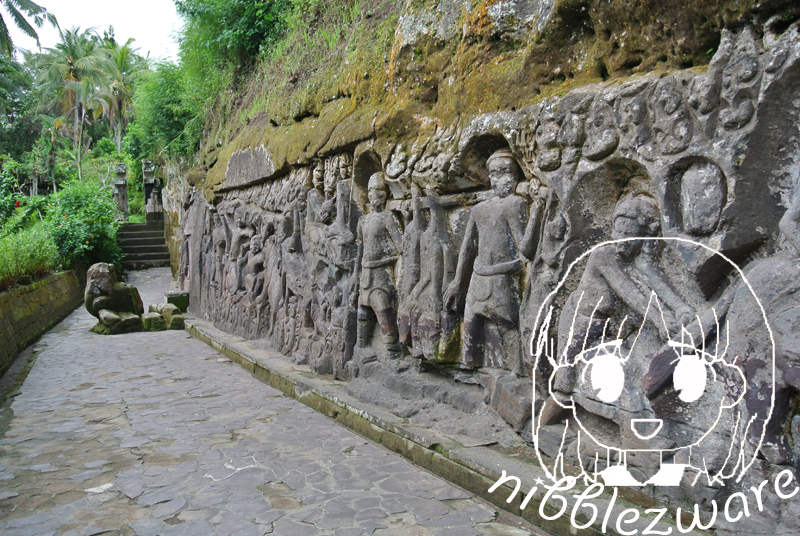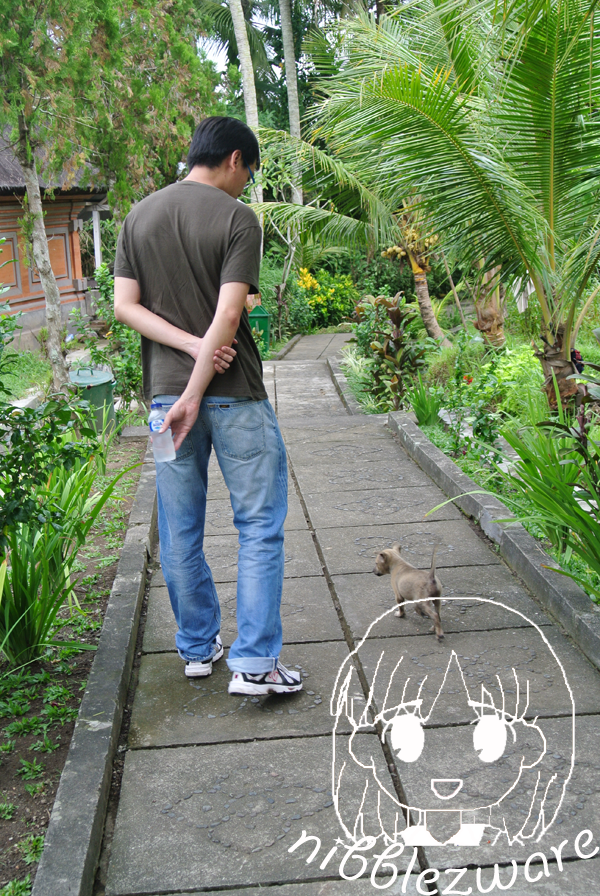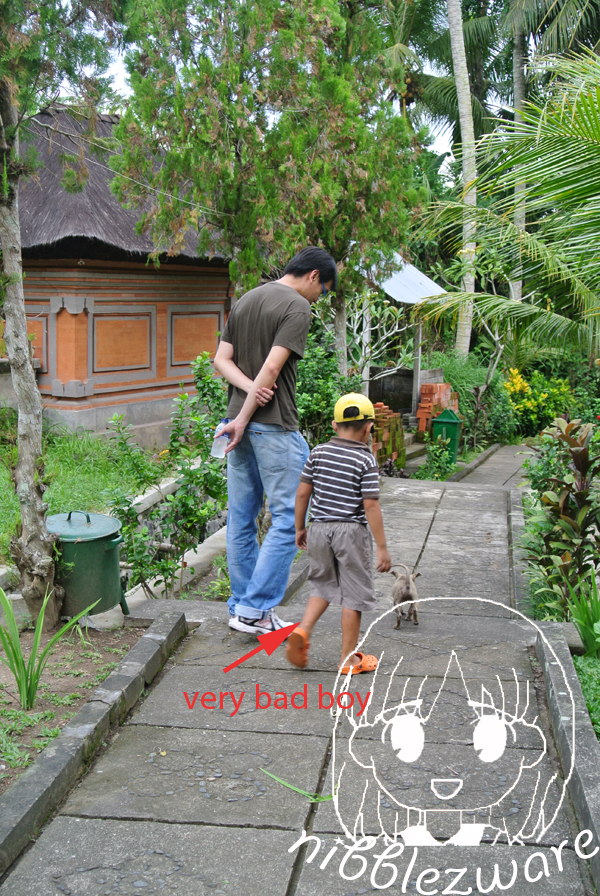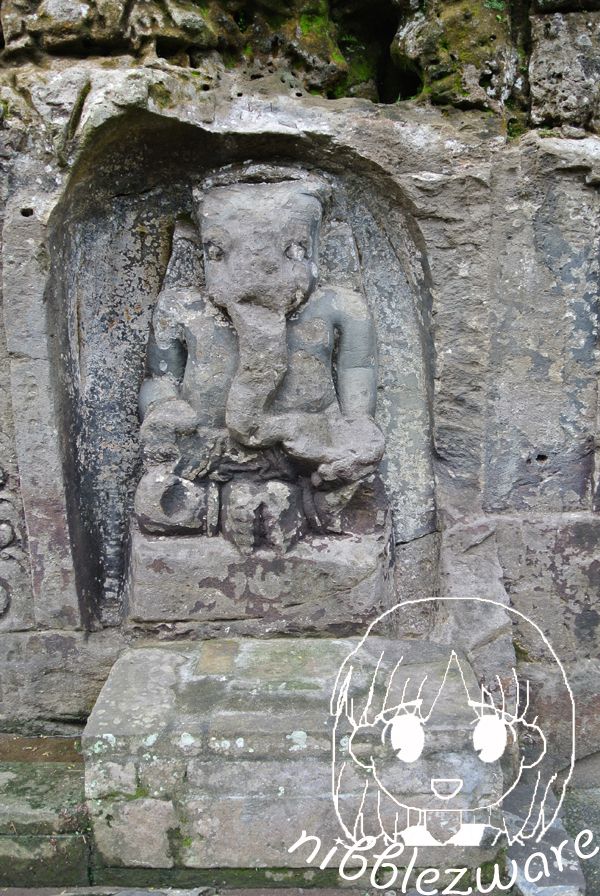I
really think that Ubud is severely ruined by "Eat Pray Love"rs. It is
supposed to be the cultural centre of Bali, but it is the most
tourist-driven and over-commericalized area we encountered. Every bloody
sight cost 15K rupiah to enter, even Yeh Pulu, which we had been conned
by the travel guides as "water container" temple with intricate wall
carvings. Well... we did see a short wall of carvings, but that's all..
and we didn't see where the supposed water container was. I almost thought that the water container was this statue somewhere along the path to the shrine, because on our way back an old lady with a coterie of little children (including the bad boy - see below) was praying in front of it.
The only thing interesting about Yeh Pulu was this really adorable puppy that sniffed and followed us everywhere. Unfortunately there was a very naughty boy who ran out and chased the poor doggie to stop him from following us, at one point, he even tried to step on the doggie's head. I wanted to scold the little boy but Bobo stopped me. And he stopped me from playing with the doggie. He said I would make the doggie's life more miserable, because the boy would only be more merciless.
Ok, according to "The Rough Guide to Bali & Lombok", the small spring after which the site is named (yeh meaning "holy spring" and pulu being "stone vessel" rises close to the statue of Ganesh and is sacred. The Balinese are so literal, aren't they, first Goa Gajah (meaning Elephant cave literally with its statue of Ganesh inside) then now Yeh Pulu.
The only thing interesting about Yeh Pulu was this really adorable puppy that sniffed and followed us everywhere. Unfortunately there was a very naughty boy who ran out and chased the poor doggie to stop him from following us, at one point, he even tried to step on the doggie's head. I wanted to scold the little boy but Bobo stopped me. And he stopped me from playing with the doggie. He said I would make the doggie's life more miserable, because the boy would only be more merciless.
Ok, according to "The Rough Guide to Bali & Lombok", the small spring after which the site is named (yeh meaning "holy spring" and pulu being "stone vessel" rises close to the statue of Ganesh and is sacred. The Balinese are so literal, aren't they, first Goa Gajah (meaning Elephant cave literally with its statue of Ganesh inside) then now Yeh Pulu.
Says here too that "carved away from a cliff face, the 25 metre long series of Yeh Pulu carvings are said to date back to the fourteenth or fifteenth century. they are thought by some historians to depict a five-part story and while the meaning of its story has been lost, it;'s still possible to make our some recurring characters and to speculate on the connections between them; local people, however, describe the cravings as showing daily activities from time past. I think I believe the local people more, but seriously, who pushes the cow (look at the first photo of the carved woman pushing at an animal rump)?





No comments:
Post a Comment